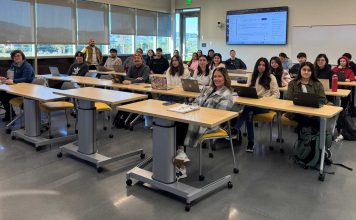Planners say their positive economic views may be
overly-optimistic
San Jose – Residential development may not be Coyote Valley’s magic elixir after all.
Just four weeks after San Jose planners said that building houses in the valley would benefit the city’s economy and attract major industry, they conceded that their economic assumptions might have been too optimistic.
That admission casts doubt on an effort to upend the city’s historical planning process for Coyote Valley and allow homebuilders to develop before the city adds thousands of jobs to the area, just north of Morgan Hill.
Laurel Prevetti, the planner in charge of the project, said Monday that economic planners had made several changes to an ongoing fiscal analysis, but that it was too soon to know what the analysis would say about the right pace of development in Coyote Valley.
“We’ve added an additional caveat, another caution, to what we provided earlier,” Prevetti said. “Those numbers were truly preliminary and this is an expression of that. But it’s not fair to say that because these assumptions change, everything changes.”
But in August, a economist hired by the city said that the best way to build the massive infrastructure needed to turn Coyote Valley into a bustling pedestrian-friendly community of 50,000 residents and 50,000 jobs would be to build houses to take advantage of a red-hot real estate market.
Doing so, said Darin Smith, of Berkeley’s Economic & Planning Systems, would attract industry and allow the city to develop the area much sooner than waiting to build houses after the area attracted corporate residents.
Smith said that taxes and fees associated with residential development would make Coyote Valley self-sustaining. Since August, however, assumptions about the revenue those fees would raise have been revised downward, dramatically in some cases. For example, Smith’s analysis assumed that San Jose would reap 17 percent of Coyote Valley property tax to pay for city services. The true figure is 11 percent, a change that could mean a swing of several hundred million dollars, planners and homebuilders said.
But even with that dose of bad news, the task force directing growth in Coyote Valley still seems poised to recommend that the San Jose City Council replace the long-standing requirements for building houses in Coyote.
Those requirements – that there be 5,000 new jobs in the region and that San Jose have a rosy fiscal outlook – have been in place since 1993. But Mayor Ron Gonzales and fellow council member Forrest Williams have been leading an effort to eliminate those so-called triggers in favor of a plan that allows any development that won’t sap San Jose’s already leaky budget.
The task force could decide as soon as November to ask the city council to change the city’s plan for Coyote Valley. Monday night, it was a homebuilder who suggested that jobs not be eliminated from development triggers and that the task force guard against turning Coyote Valley into a bedroom community.
“We need an assurance from the very beginning that there will not be housing absent job development,” said Steve Speno, of Gibson Speno. “We need to live up to the long-standing assurance and provide a comfort level that Coyote Valley will not be developed as a housing project.”
Speno also offered yet another scenario for San Jose number crunchers. He suggested that initial housing development of 3,000 homes be predicated on 3,000 job, and that 15,000 jobs be in place before 10,000 homes are approved.
That suggestion compromises between Smith’s housing-first approach and a two-to-one jobs-to-housing ratio proposed by Gonzales and Williams. All the proposals would lead to accelerated housing development. Under existing triggers, planners don’t expect to see housing in Coyote Valley for a decade. If the triggers are dropped, there could be new houses there in 2008.
Another complicating factor is determining which types of jobs would be counted toward housing projects. City leaders are still dreaming about attracting multi-national companies involved with software and biotechnology to Coyote Valley.
Those types of jobs, they believe, attract business service providers such as lawyers and accountants, along with retail and other service industry jobs.
“We need to have the types of jobs that bring value to the area,” Gonzales said. “What we need to make this financially viable is those kinds of industries.”
Coyote Valley: Why it matters
Developing the 7,000 acres of Coyote Valley will eliminate the most significant non-urban buffer between San Jose and South County. The Coyote Valley Specific Plan envisions a pedestrian-transit-friendly-community of 25,000 homes, 50,000 jobs and 50,000 residents. The plan has been contingent on a series of triggers created in 1993 to ensure development occurred at a reasonable pace and only when necessary. The San Jose City Council will now consider whether to remove the triggers and allow residential development right away, a proposal that will meet opposition from:
Santa Clara County officials, worried that fast-paced or hopscotch development will strain county roads and other services.
Morgan Hill Unified School District officials believe thousands of new residents will overwhelm the district, which includes Coyote Valley.
Environmentalists, who consider Coyote to be critical habitat. They say San Jose should focus development in other areas, such as downtown and North First Street corridor.
Land owners in the southern, or greenbelt, section of Coyote Valley, who think the plan, which doesn’t allow development in that area, damages their property values.












